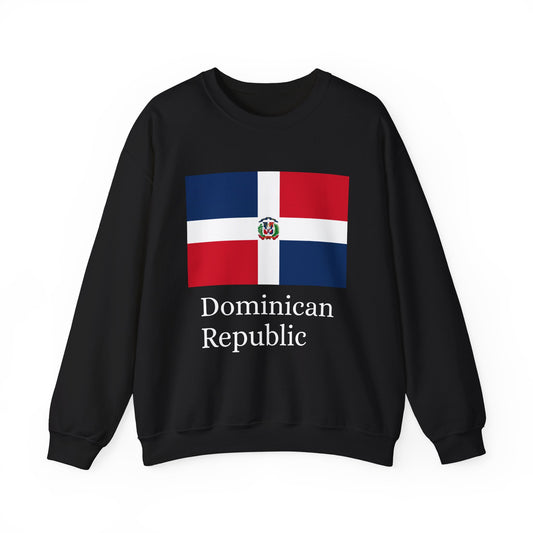-
Dominican Republic Pillow
Regular price $22.65 USDRegular priceUnit price / per -
Dominican Republic Backpack
Regular price $59.79 USDRegular priceUnit price / per -
Dominican Republic Leather Patch Hat
Regular price $18.85 USDRegular priceUnit price / per -
Dominican Republic Sweatshirt
Regular price $34.15 USDRegular priceUnit price / per -
Dominican Republic Flag Sweatshirt
Regular price $34.15 USDRegular priceUnit price / per -
Dominican Republic Mug
Regular price $11.65 USDRegular priceUnit price / per -
Dominican Republic Trucker Cap
Regular price $14.90 USDRegular priceUnit price / per -
Dominican Republic Hoodies
Regular price $34.40 USDRegular priceUnit price / per -
Dominican Republic T-shirts
Regular price $22.79 USDRegular priceUnit price / per -
Dominican Republic Flag on Hoodie
Regular price $34.40 USDRegular priceUnit price / per -
Dominican Republic Flag on T-shirt
Regular price $22.79 USDRegular priceUnit price / per -
Dominican Republic Flag
Regular price From $34.12 USDRegular priceUnit price / per
Collection: Dominican Republic
The Dominican Republic flag symbolizes pride and unity for the people of this vibrant Caribbean nation. Its bold colors and unique design hold significant historical and cultural meaning that remains relevant today. We will explore the Dominican Republic flag's fascinating history, symbolism, and current relevance.
Overview of the Dominican Republic Flag

Central to the national identity of the Dominican Republic, its flag features a distinctive design composed of a white cross that segments the canvas into four rectangles: two at the top and bottom are red, and two on the sides are blue. At the heart of the cross sits the country’s coat of arms, embellished with symbols of liberty and justice – a Bible, a cross, and a laurel branch. The flag’s colors are more than mere decoration; they are symbolically steeped. Blue stands as a beacon of liberty, red commemorates the courage and bloodshed in pursuing freedom, and white acts as a reminder of salvation and peace. This interplay of colors and symbols encapsulates the core values and aspirations of the Dominican Republic, reflecting a deep sense of national pride and unity.
Historical Context of the Flag

The journey of the Dominican Republic flag to its current status began with the nation's quest for independence, marking a pivotal moment in its history. On November 6, 1844, amidst the fervor of liberation from Haitian rule, the flag was unfurled as a symbol of sovereignty and national identity. Crafted by the visionary Juan Pablo Duarte, it was intended not just as an emblem of statehood but as a canvas narrating the unity and resilience of the Dominican people. Over the years, this iconic flag has seen modifications that mirror the country’s evolving political landscape and cultural ethos.
Initially, the design did not include the coat of arms within the central cross; this addition came later as a means to encapsulate the nation's ideals of liberty, democracy, and the pursuit of justice. These changes over time have not diluted the flag's significance; instead, they have enriched its symbolism, making it a more profound representation of the Dominican Republic's heritage and aspirations. This enduring emblem, therefore, stands not merely as a piece of fabric but as a living testament to the Dominican Republic’s journey through the epochs of colonial struggle, independence, and the ongoing quest for national identity and unity.
Symbolism Embodied in the Flag
The symbolism woven into the fabric of the Dominican Republic flag is profound, representing the nation's foundational beliefs and historical journey. The flag's colors—blue and red—are not merely aesthetic; they symbolize the unity between the country's major political forces that came together to pursue independence. Blue is a testament to liberty, and the sky above and the seas surrounding the nation signify the freedom surrounding and protecting the Dominican people. Red pays homage to the blood of the heroes who fought valiantly for the country's sovereignty and independence, a reminder of the courage and sacrifice inherent in the nation's spirit.
The white cross dividing the flag into quarters stands as a beacon of peace and faith, emphasizing the role of Christianity and the moral values that guide the nation. At the center, the coat of arms acts as a seal of the republic's governance and principles. It features a shield bearing a Bible, a cross, and arrows, each element highlighting the importance of religious faith, the struggle for liberty, and the readiness to defend freedom, respectively. Together, these symbols underscore the Dominican Republic's enduring commitment to democracy, justice, and human dignity, encapsulating the essence of the nation's identity and the ideals it strives to uphold.
Current Relevance of the Flag
Today, the flag of the Dominican Republic is not only a fixture at national events and military ceremonies but also serves as a daily reminder of the country's sovereignty and unity. Its presence in schools, public buildings, and across communities underscores the deep-seated national pride among Dominicans. Moreover, it plays a crucial role during Independence Day celebrations and other significant national holidays, symbolizing the Dominican people's collective memory and shared values.
In recent years, the flag has also become a symbol of protest and unity in political demonstrations, showcasing the population's active engagement in the democratic process. While its use in such contexts has sparked debate, it underscores the flag's role as a living emblem of the people's voice and aspirations. The ongoing dialogue surrounding the flag's representation in various spheres of Dominican life reflects its integral role in the country's cultural and political landscape, demonstrating its enduring relevance in shaping and expressing national identity.
Additional Facts and Protocols Related to the Flag
Respecting the Dominican Republic flag includes protocols that underscore the nation's values and historical reverence. When displaying the flag, it is paramount that it is positioned in a manner that ensures it never makes contact with the ground, symbolizing respect and dignity for the nation's symbol. Hoisting and lowering the flag is done with great care and ceremony, reflecting the solemn respect afforded to national symbols. Another protocol involves how the flag is flown at half-mast. This is reserved for periods of national mourning or to honor the passing of significant national figures, signaling a collective moment of reflection and respect across the country.
An especially intriguing aspect of the flag is the law regarding its display. According to Dominican flag etiquette, when displayed alongside flags of other nations, the Dominican flag must always be positioned in a place of honor—this means it should be either at the center, the highest point, or to the observer's left among a circle of flags. Notably, the flag’s design is unique in that it features a coat of arms at its center, which is not commonly found in the flags of other nations.
This coat of arms, laden with symbols of liberty, justice, and religious faith, adds depth to the flag's meaning. The Dominican Republic flag is a deeply respected emblem and an integral part of the nation's identity. Its protocols and unique aspects foster a sense of pride and unity among Dominicans, further cementing its place in the fabric of Dominican society.
























